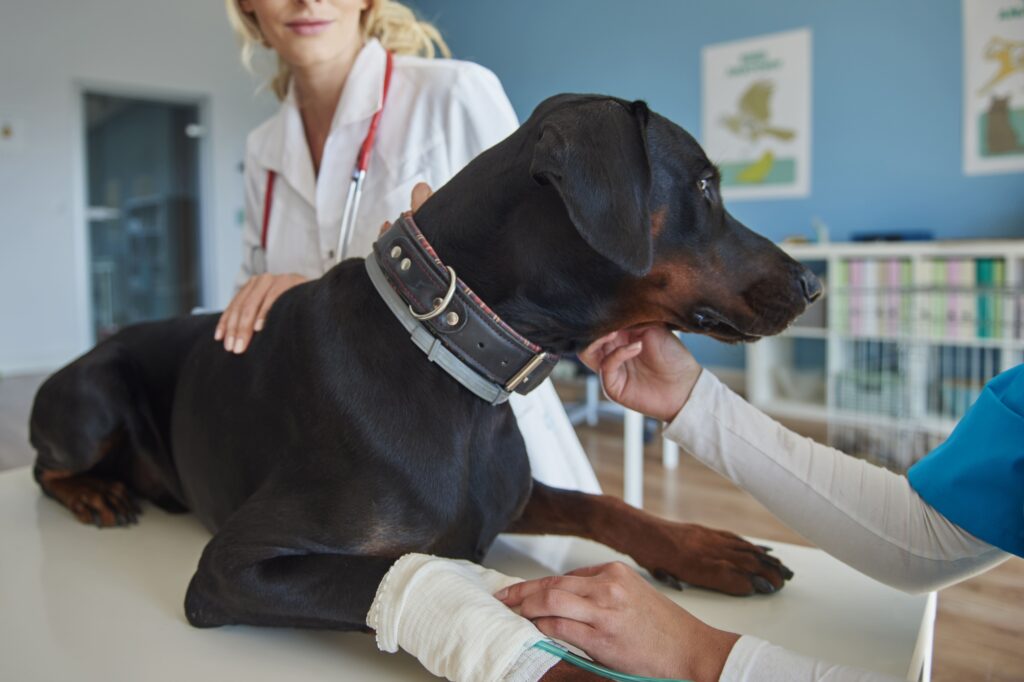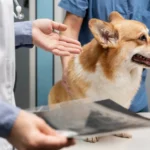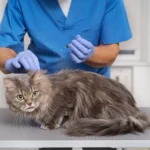
Contents
Pet emergencies can be overwhelming, and the sight of your beloved companion in distress is never easy. However, recognizing common pet emergency signs early and knowing how to respond can significantly increase the chances of a successful recovery. Whether it’s a sudden illness, injury, or unexpected health issue, understanding these warning signs and acting quickly is crucial.
In this guide, we’ll cover the most common pet emergency signs, their possible causes, and what immediate actions you should take. The importance of seeking emergency vet care promptly cannot be overstated. Early intervention can make all the difference in your pet’s health and well-being.
What is the Meaning of Pet Emergency Signs?
Pet emergency signs are the critical signals that indicate something is seriously wrong with your pet’s health and immediate attention is needed. These signs alert owners that quick action could make the difference between a safe recovery and a life-threatening situation. They serve as an early warning system, helping pet parents know when to seek urgent veterinary care.
Top Pet Emergency Signs and How to Respond
1. Severe Vomiting
Causes of severe vomiting: Vomiting in pets can be caused by infections, toxins, or foreign bodies ingested. It can indicate digestive issues or poisoning.
- How to manage vomiting: Withhold food and water for a few hours to prevent further irritation. If vomiting persists for more than 24 hours or if the vomit contains blood, contact an emergency veterinarians immediately.
- Importance of diagnostic testing: Persistent vomiting requires diagnostic testing such as blood tests, X-rays, or ultrasounds to identify the underlying cause.
2. Severe Diarrhea
Causes of severe diarrhea: Diarrhea can be caused by infections, gastrointestinal disorders, or poisoning. It can lead to dehydration if left untreated.
- What to do: Withhold food (but provide water) for 12–24 hours to allow the digestive system to settle. Monitor your pet’s hydration closely. If diarrhea persists for more than 48 hours, or if accompanied by other symptoms, contact an emergency vet.
- When to seek emergency care: If diarrhea is persistent or bloody, immediate vet care is essential to prevent dehydration and manage any underlying conditions.
3. Uncontrolled Bleeding
Causes of uncontrolled bleeding: Bleeding may occur from deep wounds or internal injuries after trauma. It can quickly become life-threatening if not managed.
- Triage: Apply pressure on the wound using a clean cloth or bandage to stop the bleeding. Keep your pet calm to avoid increasing blood flow. Rush your pet to an emergency vet immediately, as deep bleeding and internal bleeding require urgent care.
- Why not medicate at home: Avoid using medications that could interfere with clotting, and never attempt to treat severe bleeding beyond first aid.
Check out this detailed guide on how to control severe bleeding in pets until help arrives.
4. Difficulty Breathing
Causes of breathing difficulty: Difficulty breathing can be caused by respiratory infections, trauma, or underlying conditions such as heart disease or heatstroke.
- Immediate steps: Keep your pet calm and avoid exertion. Transport them to the vet immediately, and provide details on symptoms, such as coughing, panting or visible signs of distress. Quick intervention is essential to prevent further complications.
- Symptoms to note: Raspy breathing, labored breathing or bloody discharge from the nose or mouth can all indicate life-threatening conditions.
5. Difficulty Urinating
Causes of difficulty urinating: This could signal a urinary blockage (particularly in male cats), urinary tract infections (UTIs), or kidney issues.
- When to seek veterinary care: If your pet is unable to urinate or is experiencing painful urination, especially if accompanied by vomiting or lethargy, take them to the emergency vet immediately. Urinary blockages can lead to kidney failure if not treated promptly.
6. Unexpected or Severe Seizures
Causes of seizures: Seizures may indicate neurological conditions, poisoning, or metabolic disorders.
- First aid: During a seizure, keep your pet safe by removing hazards from the area and timing the seizure. Do not attempt to put anything in their mouth. Contact your emergency vet immediately after the seizure ends.
- Importance of timely care: Seizures lasting more than 5 minutes or occurring frequently can be life-threatening and require immediate attention.
7. Inability to Walk
Causes of inability to walk: A dog or cat unable to walk may have broken bones, dislocated joints, or neurological issues. This can result from trauma, arthritis or nerve damage.
- Pet transport: Limit movement to prevent further injury. Secure your pet in a crate or soft carrier when heading to the vet. If your pet cannot walk, they need urgent medical assessment and possibly surgery or therapy.
- Injury assessment: Check for swelling, bruising or deformities in the affected area. Quick action is necessary to address bone fractures or neurological trauma.
8. Swollen Abdomen
Causes of a swollen abdomen: This could indicate gastric dilatation volvulus (GDV), internal bleeding or fluid accumulation.
- Immediate action: Transport to the vet immediately, as a swollen abdomen can be life-threatening. GDV, also known as bloat, requires urgent treatment to prevent the stomach from twisting and causing shock or organ failure.
- Diagnostic testing: X-rays and blood tests will help determine the cause of the swelling.
9. Loss of Consciousness
Causes of loss of consciousness: This can be due to trauma, poisoning, or a stroke. Immediate action is required to stabilize your pet.
- Triage: Quickly assess the situation. Ensure your pet is breathing and has a pulse. Transport them to the emergency vet immediately, as loss of consciousness can be a sign of severe internal damage or brain injury.
10. Major Injuries
Causes of major injuries: Fractured bones, deep lacerations, or eye injuries all require urgent care.
- Do not attempt to treat complex injuries: Some injuries, like deep lacerations or fractured teeth, require professional treatment. First aid can help stabilize the pet, but don’t try to treat the injury beyond that.
- Seek veterinary emergency care: Major injuries should be evaluated by a veterinarian immediately to ensure proper healing.
What to Expect at the Emergency Vet Hospital
Diagnosis and Triage Process
Upon arrival, the emergency vet will conduct an immediate diagnostic process involving physical exams, X-rays, or blood tests to assess the severity of the condition. Pet medical records are helpful in providing context for the treatment plan.
Critical Care and Treatment
Depending on the emergency, your pet may be placed in the critical care unit for intensive treatment, including surgery, pain management, or intravenous fluids.
Follow-Up Care
Once your pet has received emergency treatment, your vet will provide post-treatment guidance, including any medication or at-home care instructions. Regular follow-up visits are crucial for monitoring recovery and ensuring full healing.
What Should I Do During a Pet Emergency?
Stay Calm and Assess the Situation
Staying calm allows you to make quick, rational decisions. Recognize which symptoms are life-threatening and prioritize care. Quick action can prevent complications.
Call the Emergency Vet
Always call the emergency vet before heading in, providing clear details about symptoms like painful urination, seizures or difficulty breathing. This ensures they are ready to treat your pet when you arrive.
Prepare for the Visit
Prepare pet medical records, ID and any recent medication information. Make sure your pet is as comfortable and stable as possible for transport.
Pet First Aid
Learn basic pet first aid for managing minor injuries while en route to the vet. This includes controlling bleeding, or providing CPR in severe emergencies.
Avoid Fixing Injuries Beyond First Aid
Some injuries (like fractured teeth or deep wounds) need professional treatment. Do not attempt to treat these injuries beyond basic first aid.
Seek In-Person Care
Even if symptoms improve, always seek in-person care to ensure your pet receives proper treatment and is fully evaluated.
Conclusion
Recognizing common pet emergency signs is crucial for pet owners. Timely recognition and response to signs like severe vomiting, uncontrolled bleeding, and difficulty breathing can significantly improve your pet’s chances of a successful recovery. Always prioritize emergency veterinary care and follow up with the necessary steps for long-term healing.
At North MS Pet Emergency, we specialize in emergency care for pets. If your pet is showing signs of distress or injury, don’t wait, contact us immediately for professional care. We are here to help your pet recover quickly and safely.
Contact Us Now for immediate care, or visit us for after-hours emergency care for pets.
FAQs
1. When Should I Go to the Pet ER?
If your pet is experiencing severe symptoms like difficulty breathing, uncontrolled bleeding, persistent vomiting, or seizures, it’s time to visit the pet ER. These are signs of serious conditions that require immediate veterinary attention for your pet’s well-being.
2. How to Tell if an Animal Is Suffering?
Signs of suffering in pets include whining, panting excessively, limping, or avoiding movement. Changes in behavior, such as hiding, aggression, or difficulty eating, may also indicate pain. Always consult a vet if you suspect your pet is in distress.
3. What Are Four General Symptoms That a Sick Animal Will Have?
Four general symptoms of a sick animal include:
- Lethargy (lack of energy)
- Loss of appetite or difficulty eating
- Changes in behavior, such as hiding
- Vomiting or diarrhea that lasts more than 24 hours
4. What Are Some Pet Emergency Examples?
Pet emergency examples include severe trauma, like being hit by a car, seizures, difficulty breathing, or poisoning from ingesting toxic substances. Uncontrolled bleeding or broken bones also qualify as urgent situations requiring immediate intervention.
5. What Is the Veterinary Emergency Protocol?
Veterinary emergency protocol includes quickly assessing your pet’s condition, stabilizing them, and conducting diagnostic tests (e.g., X-rays, blood tests) to determine the extent of the injury or illness. Immediate care, such as pain management and critical interventions, follows the assessment.




